Featured Articles
Have you ever seen "BIOS" in other articles about changing things on a computer or checking it popping from the screen? But you never hear and enable it again because it's located on the motherboard inside your PC. What is BIOS? How to enter BIOS? How to set up and update BIOS? This guide will explain everything about Basic Input/Output System.
In this article, you'll learn:
- What Is BIOS in Computer
- How to Enter BIOS on Windows 10 and Windows 11
- BIOS Setup: How to Enable Legacy BIOS on Windows
- How to Update BIOS
- Troubleshooting of Basic Input/Output System Errors
What Is BIOS in Computer
History of Basic Input/Output System
The bios code was created in the early days of computing. Word "BIOS" is created by Gary Kildall and appeared on the CP/M operating system on 1975, representing a specific boot portion for direct loading. It was designed to be simple and easy to use. The bios code has evolved over the years to become more complex and feature-rich. Today, bios code is used to configure hardware devices, enable security features, and provide support for new technologies.
What Does BIOS Use For?
The basic Input/Output System checks all of your hardware to ensure it works correctly and loads the operating system. It is essential but not something most users need to worry about. BIOS is usually set up to work automatically and does not need to be changed.
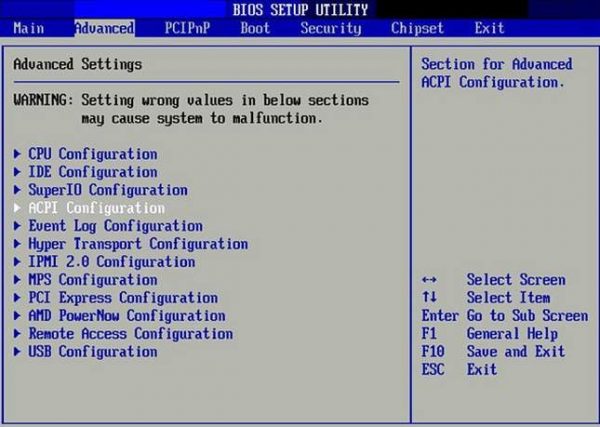
How Does Basic Input/Output System Work?
BIOS is the first software program that runs when you start your computer. When you turn on your computer, the BIOS begins by testing the hardware to ensure everything is working correctly. Next, it initializes and identifies all of the system's hardware. Then, it loads the operating system into memory and hands control it. Lastly, the BIOS provides various services available to the operating system and applications while the computer is running. These services include power management, hardware configuration, and boot management.
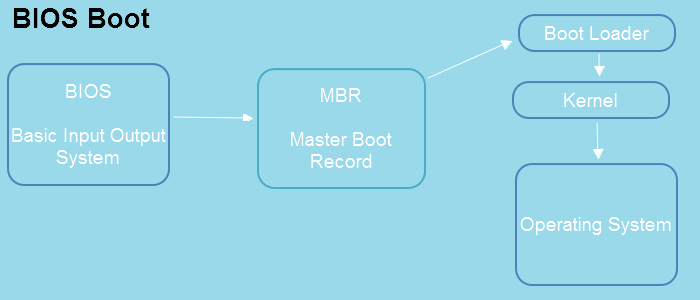
Main Functions
The BIOS performs four main tasks: test the computer before booting, initializing and identifying system hardware, loading the operating system, and providing runtime services.
BIOS VS. UEFI
BIOS and UEFI are two different types of firmware used to boot computers. BIOS (Basic Input/Output System) is the older type of firmware, while UEFI (Unified Extensible Firmware Interface) is newer. BIOS and UEFI are responsible for initializing the computer's hardware and booting the operating system. However, there are some critical differences between the two.
BIOS is based on the concept of enslaver and secondary devices, where the BIOS is the master and the devices are the slaves. The BIOS is stored in ROM (read-only memory), which means it can't be changed or upgraded without replacing the chip. In contrast, UEFI is based on the concept of drivers, where each device has its drivers that work with the UEFI to initialize the hardware and boot OS. The UEFI is stored in flash memory, which can be easily updated.
Booting speed:
UEFI is faster than BIOS because it doesn't need to go through as many steps.
User Interface:
UEFI also supports larger storage drives and uses a graphical user interface, while BIOS uses a text-based interface.
Drive Limit:
BIOS is limited to 2TB drives, while UEFI can handle larger ones.
Get More Info:
How to Enter BIOS on Windows 10 and Windows 11
How you get to the BIOS varies depending on your computer system or motherboard, but there are a few general tips that can help.
How to Access BIOS via Hotkeys
To enter BIOS, you must first restart your computer. As your computer boots up, press the key displayed on the keyboard to enter BIOS. This key is usually one of the F keys (F1, F2, etc.), but it can also be the DEL key or another, depending on your computer.
- Asus: F2, DEL key
- Dell: F2, F12
- Lenovo: F2, Fn+F2
- HP: F10, F2, F12, F1, DEL.
- MSI: DEL key
Open BIOS from Settings
Besides the default keys, the Windows start menu allows getting to BIOS. Check to learn how to enter BIOS on Windows 10.
BIOS Setup: How to Enable Legacy BIOS on Windows
Now that many manufacturers are launching UEFI-supported PCs, this is a trend, but a lot of people still use BIOS-supported PCs, even though they know UEFI is safer and faster. Why?
If I don't want to replace the latest Windows 11 machine for a while and still use Windows 10 or an older system, BIOS is a better option. Follow the three phrases to set up BIOS.
Phase 1. Check If the system Uses Legacy or UEFI
Step 1. Press the "Windows + R" shortcut and type "msinfo32" on the box. Press Enter.
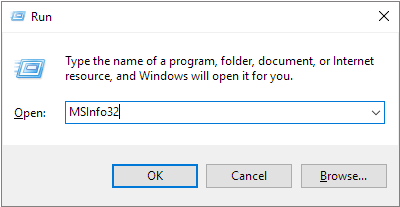
Step 2. On the "System Information" window, go to the right and see the BIOS mode.
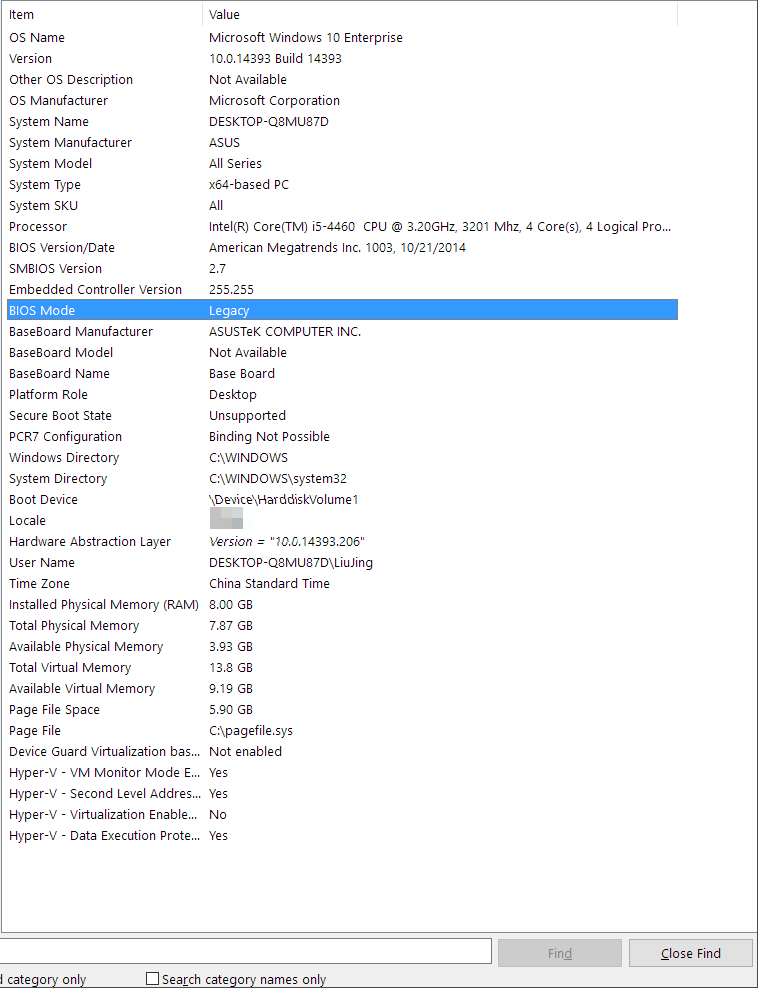
Learn More Options
Still curious? Go to see how to check UEFI or Legacy.
Phase 2. MBR for BIOS, Convert OS Disk to MBR
If you're changing your computer's BIOS mode from UEFI to Legacy, you'll need to convert your OS disk to MBR first.
Step 1. Confirm Partition Style is GPT or MBR
Right-click Windows icon > Select "Disk Management" > Right-click the targeted disk and choose "Properties" > Check partition style under volumes.
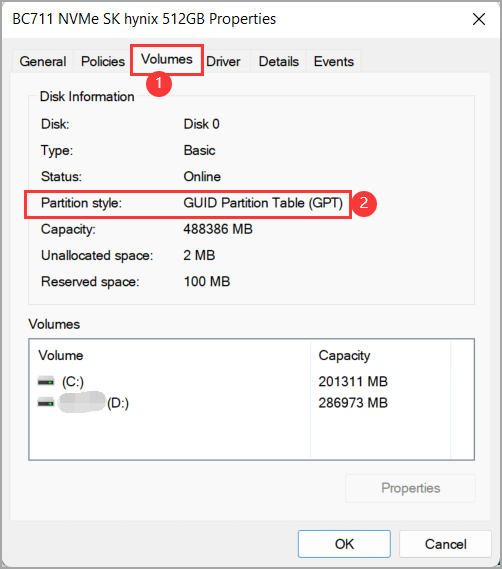
[Further News] How to tell if Windows is GPT or MBR
Step 2. Convert GPT to MBR
It can be done with the Disk Management tool in Windows. However, Disk Management requires deleting all existing volumes, then converting partition style. To prevent data loss, you need a more efficient way to transform partition styles without deleting partitions safely.
This can be finished quickly using Windows's fast disk converter, EaseUS Partition Master.
With this secure disk converter, you can save up to 80% of your time trying Windows built-in software. Also, this software supports changing MBR to GPT in BIOS.
Download It in Seconds!
How to Convert GPT to MBR:
- Click "Disk Converter" on the left menu. Select "GPT=>MBR" and click "Next" to continue.
- Select the GPT disk that you want to convert and click "Convert".
- Wait for the process completes.
Phase 3. Change BIOS Mode from UEFI to Legacy
Step 1. Open BIOS setup utility.
Step 2. Select Boot from the BIOS screen.
Step 3. Use the arrow key to select the UEFI/BIOS mode and press Enter.
Step 4. Use the arrow key to select Legacy and press Enter. Press F10 to save changes and exit.
[Related Article] How to Change BIOS Mode from Legacy to UEFI
How to Update BIOS
Any update to your BIOS has the potential to improve the stability of your computer and fix any bugs that may be causing problems. In some cases, you may need to update your BIOS to take advantage of new features or support for new types of hardware.
Preparation -Check BIOS Version and Motherboard Version
- Press "Windows + R" and enter "msinfo32" in the box. Press Enter.
- Check the "BIOS Version/Date" and the Baseboard Manufacturer/Product/Version.
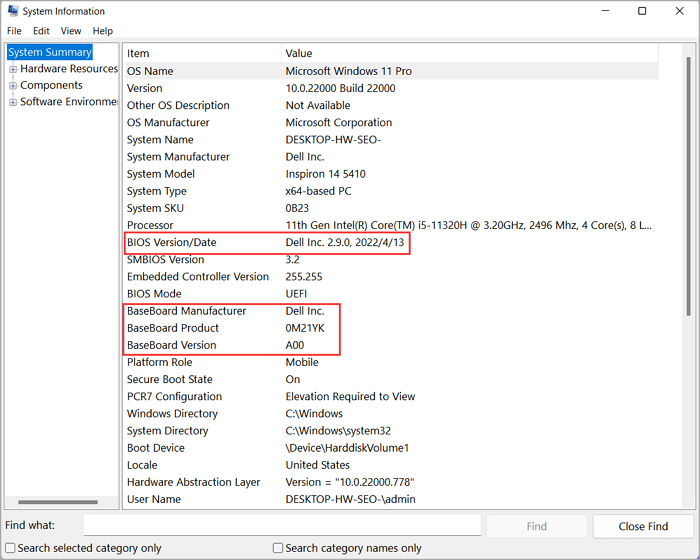
Steps to Update BIOS in Any PC
It's essential to update your BIOS regularly to ensure your computer runs at its best. Fortunately, updating your BIOS is simple and only takes a few minutes.
Step 1. You'll need to download the update from your computer manufacturer's website. (ASUS, Dell, HP, Lenovo)
Step 2. Once the update is downloaded, unzip the file and double-click on the executable. This will launch the update process. Follow the prompts to complete the update, and then restart your computer.
That's all there is to it! By keeping your BIOS up-to-date, you can ensure your computer runs at its optimal level.
LEARN MORE
Get more details about how to update BIOS Windows 10.
Troubleshooting of Basic Input/Output System Errors
Error 1: Hard Drive Recognized in BIOS But Not in Windows
One of the most frustrating computer issues is when your hard drive is recognized in BIOS but not in Windows. This can happen for various reasons, but fortunately, there are a few things you can try to get things up and running again.
To Fix: Windows 10 Not Detecting Hard Drive But BIOS Does
Error 2: Hard Drive Not Detected in BIOS
If your hard drive isn't appearing in your bios, there are a few possible explanations. First, check to ensure the power and data cables are properly connected to the drive. If they're not, that could be why the BIOS isn't detecting it. Go to see advanced fixes.
To Fix: Hard Drive Not Detected
In Closing
What does BIOS stand for? The BIOS is a critical component of any computer system and is responsible for initializing the hardware and booting the operating system. It is also responsible for managing power settings and providing basic input/output functions. The BIOS malfunctions can cause various problems, such as preventing the computer from booting up properly. Understanding how the BIOS works is excellent for troubleshooting BIOS errors. With this knowledge, you will be able to identify and fix many common BIOS issues.
Was This Page Helpful?
Updated by Tracy King
Tracy became a member of the EaseUS content team in 2013. Being a technical writer for over 10 years, she is enthusiastic about sharing tips to assist readers in resolving complex issues in disk management, file transfer, PC & Mac performance optimization, etc., like an expert.
Related Articles
-
The Beginner's Guide on How to Remove Write Protection
![author icon]() Tracy King/Dec 23, 2025
Tracy King/Dec 23, 2025 -
Partition Magic Software Free Download with How-To Tutorial [Full Guide]
![author icon]() Tracy King/Dec 23, 2025
Tracy King/Dec 23, 2025 -
Computer Is Running Slow? Causes and Fixes Are Found! [Your Ultimate Guide]
![author icon]() Tracy King/Dec 23, 2025
Tracy King/Dec 23, 2025 -
An Ultimate Guide to the Master Boot Record (MBR)
![author icon]() Tracy King/Dec 23, 2025
Tracy King/Dec 23, 2025